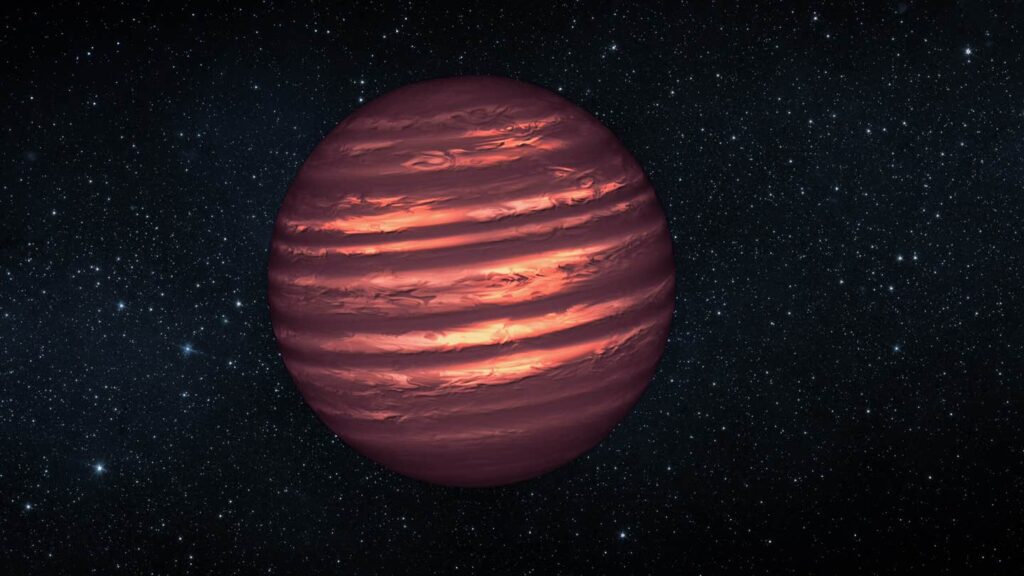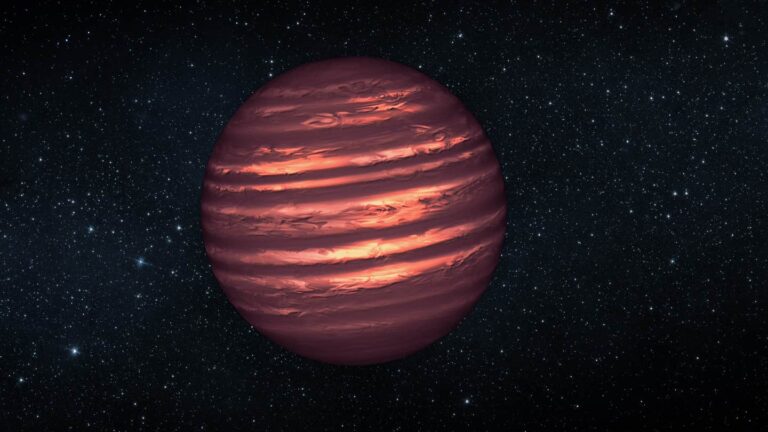The 5 enigmatic celestial bodies blur the distinction between planets and stars.
Astronomers could receive assistance in dissecting the classification of celestial bodies referred to as brown dwarfs.
Astronomers have detected five celestial objects that straddle the boundary between stars and planets—the most recent instances of a rare and mysterious group of celestial bodies known as brown dwarfs.

Brown dwarfs are often referred to as “failed stars” because they lack sufficient mass to initiate fusion. However, in recent years, scientists have pondered whether there is more to being a brown dwarf than simply having slightly less mass than a star. By amassing a substantial collection of bodies that challenge simplistic definitions, astronomers aim to gain a better understanding of the various peculiarities of matter that the universe presents.
Nolan Grieves, an astronomer at the University of Geneva in Switzerland and the lead author of the new research, emphasizes the importance of addressing broader inquiries. He states, “The primary objective is to answer overarching questions such as the diversity of star systems and the formation processes of different planetary systems.”
The brown dwarf desert
Astronomers have developed increasingly advanced techniques to observe the behavior of stars flickering and wobbling, leading to the discovery of numerous peculiar orbiting worlds. However, amidst a sky teeming with celestial bodies, there is a scarcity of intermediate objects weighing between 13 and 80 times the mass of Jupiter. These entities are not classified as planets due to their ability to fuse deuterium atoms and generate heat through fusion, yet they lack the mass required to sustainably fuse hydrogen and emit light for billions of years like stars.
Despite being easier to detect than smaller exoplanets, only a few dozen of these objects have been confidently identified and described by researchers. The phenomenon of the “brown dwarf desert” raises questions about the hindrances in the production of brown dwarfs in a universe abundant with stars and planets. Some scientists propose that this absence may be attributed to the fact that the category encompasses two distinct groups with different origins. The heaviest dwarfs are believed to be failed stars that collapsed from gas clouds but did not accumulate enough mass to initiate hydrogen fusion. On the other hand, the lighter dwarfs could resemble super planets that formed from the dusty disks surrounding young stars and successfully fused deuterium.
To unravel the mystery behind the desolation of the brown dwarf desert, astronomers ironically need to discover more of these elusive objects.
A planet hunt turns up something else
The team led by Grieves, along with their collaborators, conducted a study on planets by analyzing data from NASA’s Transiting Exoplanet Survey Satellite, which observes stars for subtle dimming caused by a planet passing in front of them. During their research, they noticed a few Jupiter-sized shadows in the sky that caught their attention.
Upon further investigation using a 1.2-meter telescope at Chile’s La Silla observatory, they made an intriguing discovery. By measuring the wobbling of the host stars due to the gravitational pull of their dim companions, the team found that the presumed planets had enormous masses, ranging from 77 to 98 times the mass of Jupiter. This weight placed them very close to the upper limit of the brown dwarf mass range, making it challenging to definitively classify each object.
According to Grieves, “Some of these objects are likely stars, but they fall within the category of brown dwarfs.” The team’s findings were published in the journal Astronomy & Astrophysics in August.
Five new dwarfs
The researchers cannot make broad conclusions based on only five new examples. However, these few objects do provide some indications that are consistent with common brown dwarf theories. For instance, it is believed that these not-quite-stars cool and shrink over time. To test this theory, astronomers compared the age and size of four brown dwarfs and discovered that the larger ones were younger, while the smaller ones were older, as predicted by the theory.
Furthermore, these five objects support the idea that there are two types of brown dwarfs: failed stars and super planets. It is expected that super planets are more abundant around stars with a greater variety of elements for forming worlds. On the other hand, failed stars may have more irregular orbits since they did not develop within a stable dusty disk. The characteristics of the new brown dwarf candidates align with what one would anticipate for failed stars near the upper limit of mass.
Although the distinction between planets and stars remains unclear, Grieves is hopeful that future observations will reveal more brown dwarfs. He states, “We are contributing to the construction of a statistical sample that will enable us to gain a deeper understanding of the various star systems in our vicinity.”
Do not forget to share your opinion with us to provide you with the best posts !




0 Comments